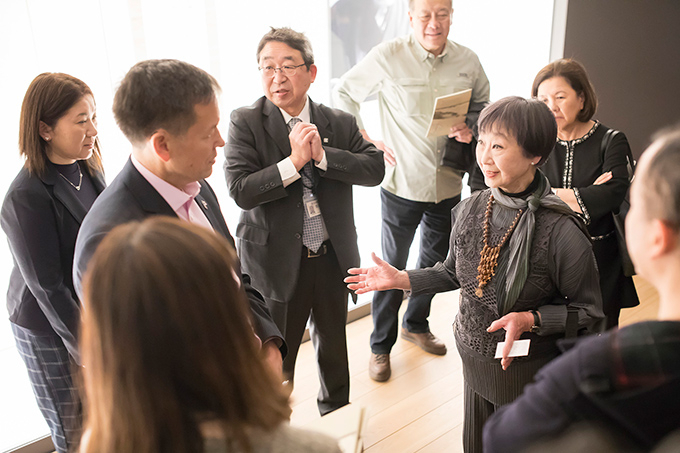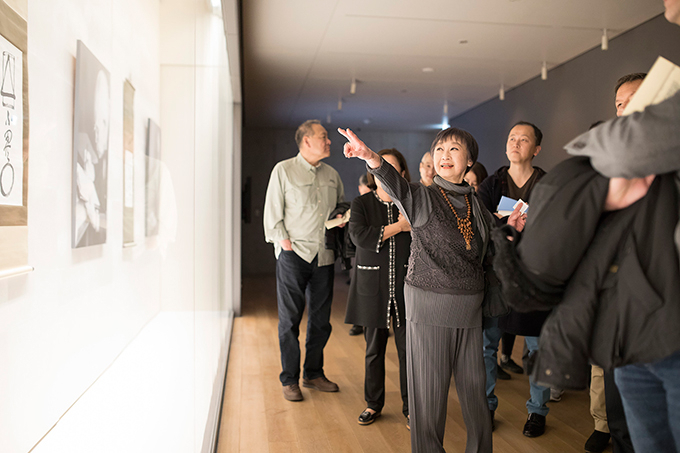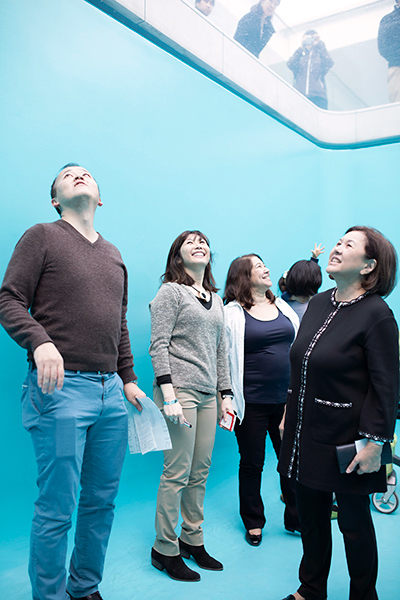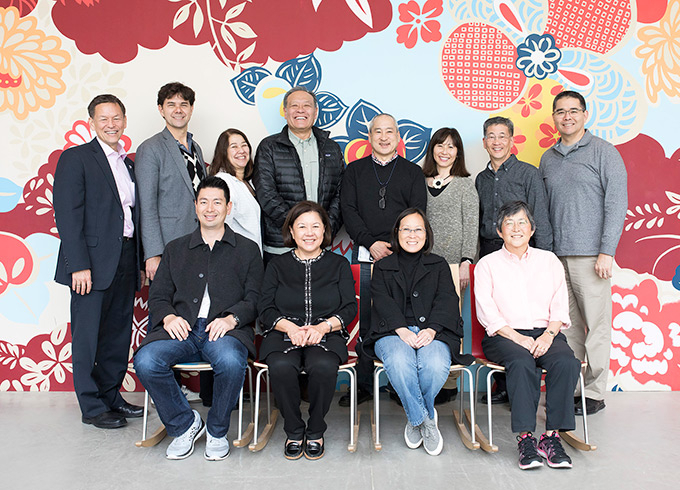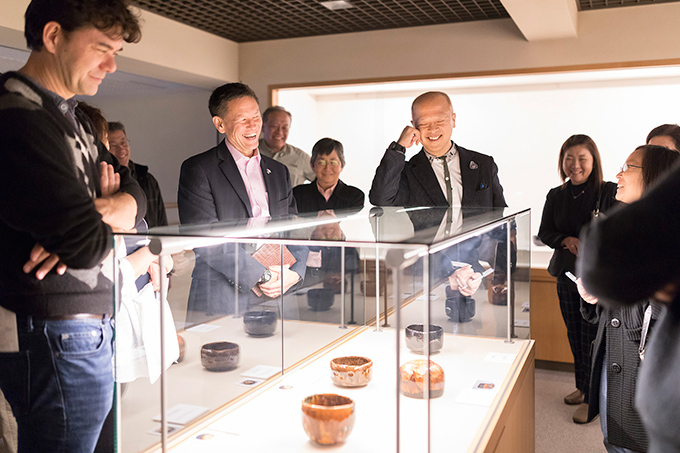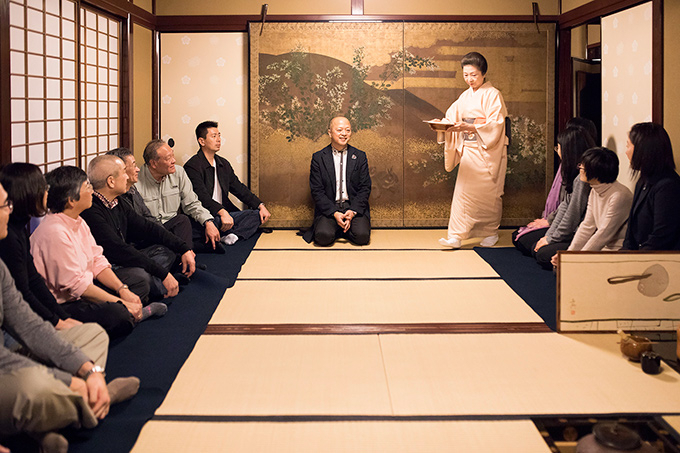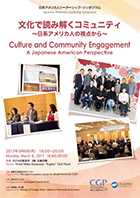Culture and the Arts as the Driving Force for Revitalization of Regions and Communities
- Taking a look at the activities of Japanese Americans and the initiatives of the Creative City of Kanazawa (part.1)
The Japanese American Leadership Delegation (JALD) program is held every year in March, organized by the Ministry of Foreign Affairs of Japan. As part of the 2017 program, the Japan Foundation Center for Global Partnership (CGP) and the U.S.-Japan Council (USJC) jointly hosted the Japanese American Leadership Symposium in Kanazawa, Ishikawa Prefecture on March 6. The JALD program began in 2000. Since then, many Japanese Americans who are leaders in their respective fields across the United States have visited Japan, including both Tokyo and regional cities, where they have engaged in discussions with scholars and experts in various fields and visited cultural institutions. The 2017 program ran from March 4 to 11, with USJC President Irene Hirano Inouye accompanying a delegation of 11 Japanese Americans. The delegation arrived in Kanazawa on March 5, where they visited major cultural institutions. The Japanese American Leadership Symposium was held in Kanazawa the following day, March 6.
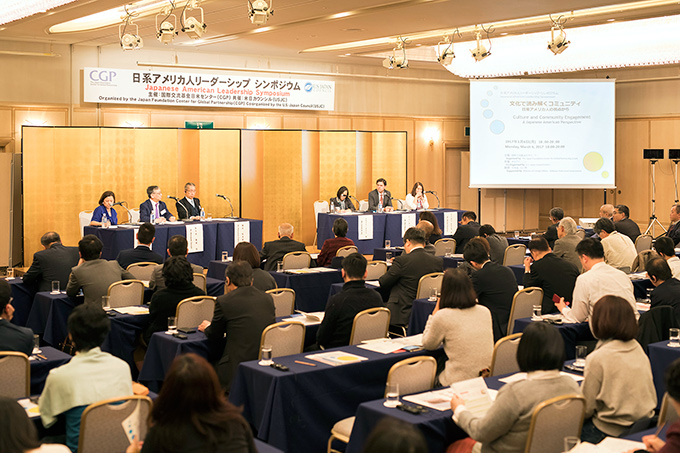
The Japanese American Leadership Symposium "Culture and Community Engagement: A Japanese American Perspective" (March 6, 2017, at Hotel Nikko Kanazawa)
Learning from Kanazawa--A city that has been quick to promote community development utilizing its cultural resources
Provincial cities in Japan are faced with a very real predicament where young people leave for bigger cities, and the remaining population continues to grow older. To tackle this issue and aim for community revitalization, many regions around Japan are engaging in various initiatives, which they hope will capitalize on the positive effects of arts and culture.
Kanazawa was the venue for this year's symposium. It is a city that has engaged in ground-breaking community development efforts to protect and preserve the city's historical assets and traditional cultures. It has also strived to bring in new creativity, especially by opening the 21st Century Museum of Contemporary Art, Kanazawa, and installing modern art works around the city. In 2009, Kanazawa became a member of UNESCO's Creative Cities Network, where it is registered as a City of Crafts and Folk Arts.
The purpose of the symposium was to provide examples from Kanazawa, share initiatives by the Japanese American leaders to revive communities and create multicultural harmony in various cities around the United States, and from these various cases find pointers for revitalizing communities through cultural resources.
In addition to participating in the symposium, another important objective for the members of the Japanese American Leadership Delegation was to visit cultural institutions and engage with people. Although the itinerary was short, the delegation visited various museums in Kanazawa on the day prior to the symposium, including the D. T. Suzuki Museum, the 21st Century Museum of Contemporary Art, Kanazawa, and the Ohi Museum.
The D. T. Suzuki Museum was established in Kanazawa in 2011. It is a space that enables visitors to contemplate the ideas and philosophy of Daisetz Teitaro Suzuki, a Buddhist philosopher born in Kanazawa and whose name is known globally for his efforts to spread interest in Zen Buddhism overseas.
The museum is also known for its architecture, designed by one of Japan's foremost architects, Yoshio Taniguchi. His designs include the Museum of Modern Art, New York and the Toyota Municipal Museum of Art, and his father Yoshiro Taniguchi was a modernist architect and a native of Kanazawa.
Born in 1870, D.T. Suzuki lived in the United States from 1949 to 1958, spending most of his eighties there. He was based mainly in New York, where even at a great age he continued his life's work of explaining, in English, the essence of Zen Buddhism.
At that time, there was a woman in the United States who met Suzuki and continued to study under him until his passing in 1966. That woman was Mihoko Okamura, a Japanese American born in Los Angeles in 1935, who currently serves as Honorary Director of the D. T. Suzuki Museum. Ms. Okamura welcomed the delegation, and speaking in English just as Dr. Suzuki had done, recounted various episodes about his philosophy and legacy as she took them on a tour of the museum.
Mihoko Okamura, Honorary Director of the D. T. Suzuki Museum, talks about the philosophy and legacy of D.T. Suzuki. Ms. Okamura was, incidentally, the secretary to the first President of the Japan Foundation.
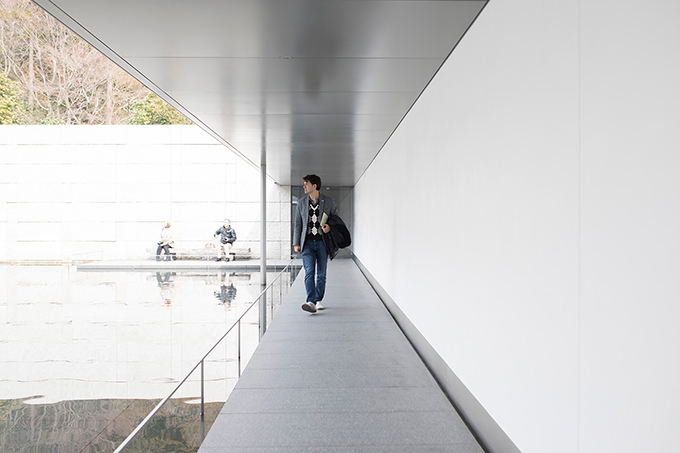
The iconic Water Mirror Garden at the D. T. Suzuki Museum. Some of the participants contemplated deeply as they gazed out over the water.
Michael Takada, CEO of Japanese American Service Committee and a member of the delegation, spoke about the visit:
"I had some degree of knowledge about Daisetz Suzuki from reading books, but I was deeply moved by the things I heard from Ms. Okamura, as this kind of knowledge can't be gained from books. Visiting the D. T. Suzuki Museum filled me with a sense of calm, almost like returning home, and at the same time also reemphasized my identity as a Japanese American."
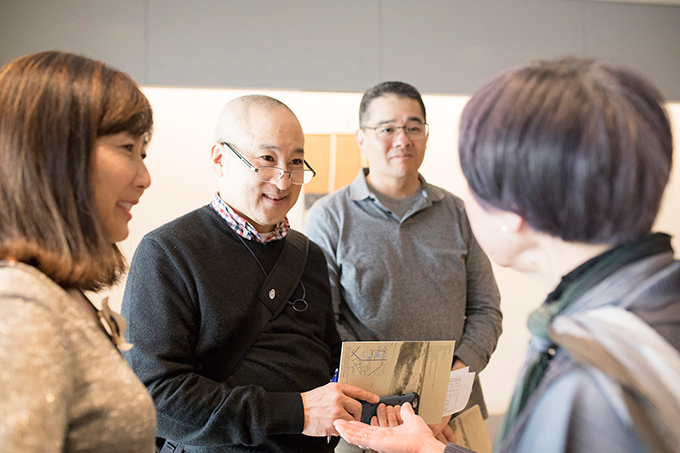
Michael Takada (second from left), CEO of Japanese American Service Committee, poses questions to Ms. Okamura.
Next, the delegation visited the 21st Century Museum of Contemporary Art, Kanazawa, an institution situated in the heart of the city that it has come to symbolize. The museum stands on the site of former elementary and junior high schools, affiliated with Kanazawa University, which were relocated in 1995 following the relocation of the university. In 2003, it was decided that the nearby Ishikawa Prefectural Office would also be relocated, which led to concerns that the daytime population in the neighborhood would decrease and the area would lose its vitality. To respond to these concerns, the city decided to open an art museum that would create new culture and reinvigorate the city center.
The building itself is circular in shape, making it impossible to discern a front and rear side, and is entirely covered in glass, an impressive design that provides light and openness. Art works are also installed on the wide green lawns around the museum, which has become a popular spot for local residents, children and adults alike, to take a break. There is no doubt that the museum is a source of vitality for the city.
A ten-minute walk from the 21st Century Museum of Contemporary Art, Kanazawa, brings you to the Ohi Museum, which exhibits Ohi ware, a form of pottery with a history and tradition dating back 350 years. Ohi ware, one of Japan's most prestigious potteries for tea utensils used in the tea ceremony, was created in Kanazawa by the first Ohi Chozaemon. Since then the tradition has been passed down through generations of Chozaemon to the present day.
The current master potter is Mr. Toshio Ohi, who assumed the name of the 11th Ohi Chozaemon in 2016. He has studied in the United States in the past, and today engages in the creation of Ohi ware with a broad perspective, taking in aspects of art and design. He is also involved in activities to explain in English the true essence of the tea ceremony and the techniques involved in making pottery, sharing his wisdom with people who come to Kanazawa from overseas to learn about the tea ceremony and traditional crafts.
For the visit by the Japanese American Leadership Delegation, he spoke in English about the history and allure of Ohi ware, and shared his thoughts on what can be perceived about Japanese culture from pottery and the tea ceremony. The delegation members listened intently to Mr. Ohi's explanations, asking many questions not only about pottery, but also about culture in general. This interactive experience with a Japanese master potter provided a valuable opportunity to learn more deeply about Japanese culture.
Innovation as a vital means of passing tradition on to future generations
The following day, March 6, prior to the symposium, the delegation visited Fukumitsuya Sake Brewery to hear a lecture about the history and culture of Kanazawa and the origins of the city.
Founded in 1625, Fukumitsuya is the oldest sake brewery in Kanazawa. Its traditions have been passed down for more than 390 years by its master brewers, who have continued to create sake from specially procured rice and pure local water. Using rice fermentation methods that have been developed over many years, the company is also engaged in the development of all-natural basic skincare products and fermented food products. Furthermore, through its directly-owned stores and various events, the company is working to promote "life with sake" both at home and overseas.
Matsutaro Fukumitsu, President of Fukumitsuya Sake Brewery, gave the lecture to the delegation. He spoke in detail about the history and culture of Kanazawa, and as someone who is heavily involved in community development efforts, his lecture was based on the theme "Succession of innovation is the genesis of tradition."
Kanazawa has two symbolic cultures: traditional crafts and gastronomy. These two cultures were formed in the early Edo period, approximately 400 years ago, when Kanazawa was controlled by the Maeda Clan. Mr. Fukumitsu noted that the culture of Kanazawa cannot be discussed without including the Maeda Clan, which ruled over the Kaga Domain at that time.
The Maeda Clan was a non-hereditary clan, known to have a fief yielding one million koku* of rice in the Kaga Domain. Their fief was the second largest behind the one owned by the Tokugawa Clan, which ruled the nation at the time. Given their powerful status, the Maeda Clan decided that in order to avoid military and political pressure from the Tokugawa Clan, they would renounce the use of military force and instead focus on promoting cultural industries, including arts and crafts. According to Mr. Fukumitsu, the arts and crafts of the Kaga Domain at that time applied the latest cutting-edge techniques.
"Toshitsune Maeda, the third-generation head of the clan, transformed arms and harness workshops into what would be called arts and crafts centers today. Skilled artisans from around Japan gathered in Kanazawa. The fifth-generation clan head Tsunanori Maeda compiled an arts and crafts sample book. It was these efforts that led a very special arts and crafts culture to permeate and spread through this region.
With a view to preventing insurgencies, the Maeda Clan also issued a decree that prohibited assembly outdoors in Kanazawa. However, as the Edo period was an era of peace, the warrior class had ample free time, and as they were unable to congregate outside, a culture of "house parties" arose, whereby senior clansmen would invite others to their homes.
The converted workshops initially focused on creating furnishings and other tools for Kanazawa Castle. The homes of senior clansmen were now beautifully furnished and ideal for hosting guests, which further helped promote the market for craft products. Chefs were also employed to provide the food for these house parties. Sake production developed together with gastronomy, and as tea was also provided at house parties, the tea ceremony becomes more widespread."
This is the history of how arts and crafts and gastronomy developed in Kanazawa. Today, there are 26 types of traditional arts and crafts in the city. In terms of gastronomy, Kanazawa has the second biggest number of restaurants per capita in the country.
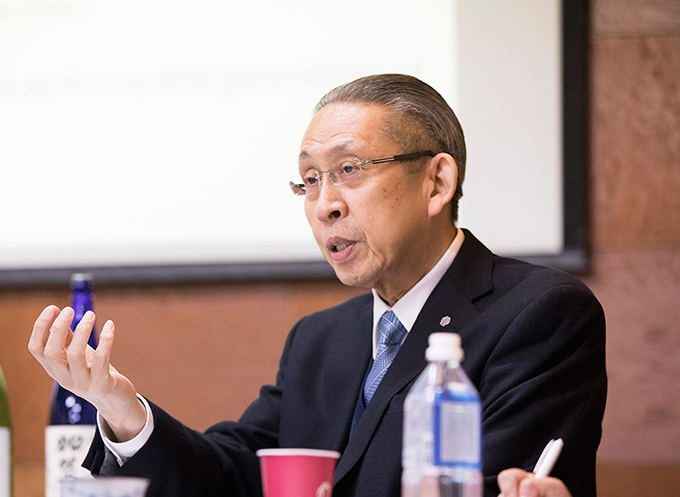
President Fukumitsu talks about the culture of Kanazawa.
At the same time, as the city's development resulted in citizens gaining wealth, support for various community activities also increased, which were known as Machishu.
"This period marks the start of the history of volunteer activities known as Machishu, which have continued right up to the present day. For example, in addition to the fire service under the administration of the city government, there is also a civic volunteer fire service that has many members. It is one of Kanazawa's major characteristics that both local government and civic groups have joined together to engage in community development."
Today, the business community takes on the role of the Machishu. The Kanazawa Association of Corporate Executives, of which Mr. Fukumitsu is a member, has been suggesting and executing cultural and community development in Kanazawa since the mid-1960s. Kanazawa Round is an organization comprised of the Ishikawa Prefecture government, the Kanazawa City government and the Kanazawa Association of Corporate Executives, and it has been the driving force behind efforts to revitalize the city through gastronomic culture and invigorate central city areas. Furthermore, based on the pride felt in being a city of crafts and creativity since the Edo period, Kanazawa Round also proposed to the city government that it apply to UNESCO to be registered as a Creative City of Crafts and Folk Art. This initiative resulted in Kanazawa being the first city in the world to gain such a designation from UNESCO.
"Kanazawa values its 'DNA' that has been passed down since the Edo period. The concept that is imbued in our DNA is that the succession of innovation is the genesis of tradition. It is important to value the old and also try the new. The Maeda Clan's initiatives for arts and crafts were considered the height of innovation when they were first begun, and that is where such a concept was born.
The company creed of Fukumitsuya Sake Brewery is also 'succession of innovation is the genesis of tradition.' We are seeking to evolve our business from being a sake manufacturer to becoming a 'rice fermentation expert,' focusing our efforts on incorporating innovative new techniques while also upholding traditions."
"Succession of innovation is the genesis of tradition." -- Considering how the culture of Kanazawa has developed through history and just how much tradition and culture have been passed down to the present day, it is not difficult to imagine how much this phrase resonated with the members of the delegation.
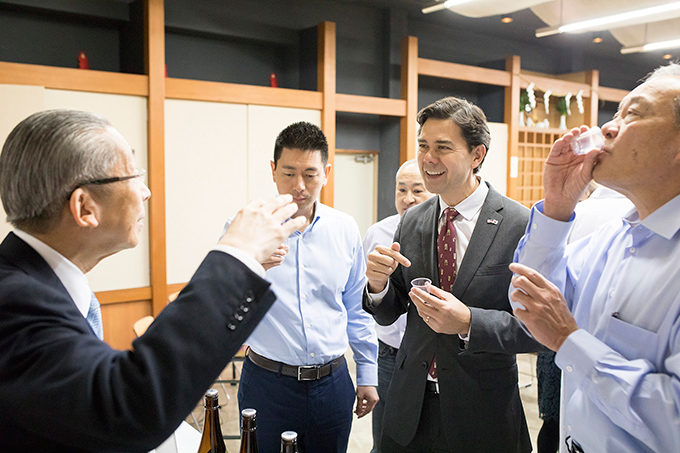
Participants visit Fukumitsuya Sake Brewery and learn about the process of making junmai-shu (sake made without adding distilled alcohol).
At the end of the visits on their the second day in Kanazawa, Gary Yamashita, CEO of Sakura Square and a member of the Japanese American community in Denver, spoke about his impressions:
"I was really impressed by the pride that Mr. Fukumitsu and all of the people we met at the museums have in their city. I felt very envious."
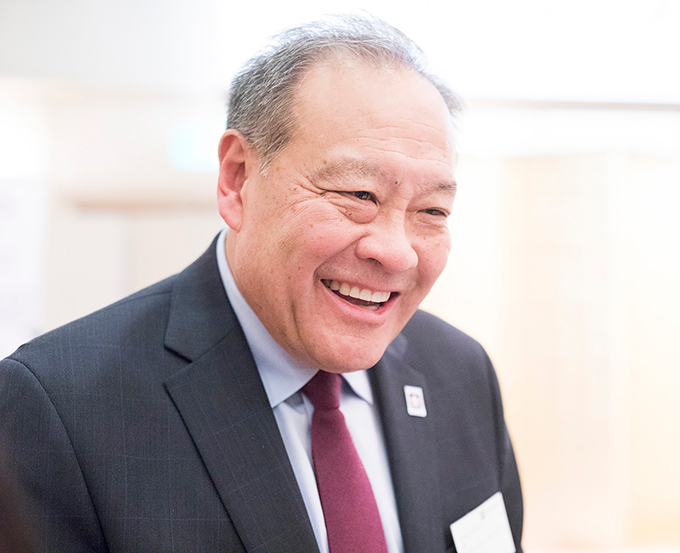
Gary Yamashita, CEO of Sakura Square.
(Text: Sayuri Saito, Photos: Kenichi Aikawa)
* 1 koku is approximately 180 liters.
Moderators
Masayuki Sasaki
Dr. Masayuki Sasaki is a Distinguished Professor at Doshisha University and Emeritus Professor at Osaka City University. He also serves as director of the Promotion Office for the Creative City of the "Culture and Art Creation Cities" Project of the Agency for Cultural Affairs, and advisor to the Creative City Network of Japan.
Irene Hirano Inouye
Irene Hirano Inouye is President of the U.S.-Japan Council. After serving as President and founding CEO of the Japanese American National Museum in Los Angeles for 20 years, she established the non-profit organization the U.S.-Japan Council in 2009. The Japan Foundation Awards 2012 recipient.
Discussant
Matsutaro Fukumitsu
Matsutaro Fukumitsu is President of Fukumitsuya Sake Brewery. He also serves in various other positions, including Chairman of Ishikawa Sake Brewers Association, Chairman of Kanazawa Sake Brewers Association, and Chair of the Kanazawa Creative City Conference Executive Committee.
Japanese American Leaders
| David Boone | President, CB&I Federal Services |
| Jason Fujimoto | President & COO, HPM Building Supply |
| Sawako Gardner | Judge, Portsmouth District Court, State of New Hampshire |
| Roy Hirabayashi | Co-Founder, San Jose Taiko |
| Leslie A. Ito | President & CEO, Japanese American Cultural & Community Center |
| Lynn Nakamoto | Associate Justice, Oregon Supreme Court |
| Patrick Oishi | Judge, King County Superior Court, Washington State |
| Ken Russell | Commissioner, City of Miami |
| Michael Takada | CEO, Japanese American Service Committee |
| Wendy Takahisa | Executive Director, Office of Community Relations, Morgan Stanley |
| Gary Yamashita | CEO, Sakura Square |
Related Articles
Back Issues
- 2023.12. 7 Movie Theaters aroun…
- 2023.6.16 The 49th Japan Found…
- 2023.4.24 The 49th Japan Found…
- 2022.12.27 Living Together with…
- 2022.12.27 Living Together with…
- 2022.8.12 Inner Diversity <…
- 2022.3.31 The 48th Japan Found…
- 2022.3.29 Beyond Disasters - T…
- 2021.11.29 Crossing Borders, En…
- 2021.4.13 Crossing Borders, En…


